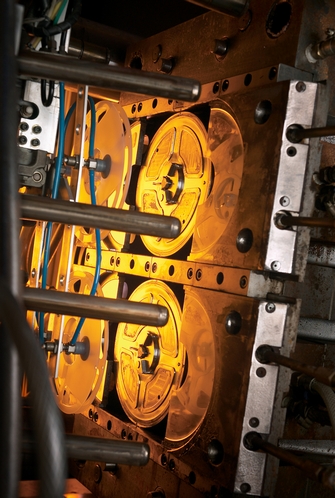Dry Film Coatings
Essentially a bonded dry film lubricant is simply a dry lubricant dispersed in a binder and/or attached to a surface by an adhesive material, this is carried for application purposes in a solvent or carrier fluid which evapourates after application.
Bonded dry film lubricants can be thought of as high performance, paint-like coatings consisting of fine particles of dry lubricants blended with a binder and special additives. After application and curing, these lubricants bond to the substrate and form a solid film. The film reduces friction and increases wear life.
Dry film lubricants contain special materials that reduce friction and wear by preventing surface-to-surface contact between mating parts. Their performances vary depending on the specific lubricant used. Some offer excellent lubrication and corrosion protection, while others operate at high temperatures or under high loads.
For application, spraying, dipping, or tumbling of the components in the material is used. Some can also be thermally cured to enhance the bonding of the coating. The type of substrate material, surface chemistry, texture, form, and mechanical properties of the base material also affects the performance of the film.
The most commonly known dry film lubricants are Molybdenum disulfide (MoS2 or Moly), PTFE and Graphite, however, there are others. Some are formulated for use in extreme environments and are able to withstand chemicals and radiation.
Dry Films generally provide a thin film (10—100 microns) of resin binder with suitable additives such as molydisulfide, PTFE, or graphite. They provide a tough, durable boundary of solid film lubricant, have low sheer strengths, low co-efficients of friction (typically .02—.08) and can withstand very high loads.
Dry film coatings are widely used for one or a combination of the following reasons:
- Components operating in corrosive atmospheres
- Components may be stored for long periods of time
- Permanent lubrication is desired (such as inaccessible parts)
- Operating pressures exceed the load bearing capabilities of oils and greases
- Parts are subject to frequent disassembly
- Where clean operation is desired (Dry Films will not collect dust, dirt and debris like greases and oils)
- Where a protective coating or sacrificial break-in lubricant is needed (e.g. piston skirts)
- Where fretting and galling is a problem (such as splines, UV Joints etc…)
- Where easy release is desired (such as fasteners and plastic moulding operations)
IKV offer a full range of specialist lubricants. Please contact us to discuss your specific requirements or to arrange a free on-site survey.

© 2025 IKV Tribology Ltd